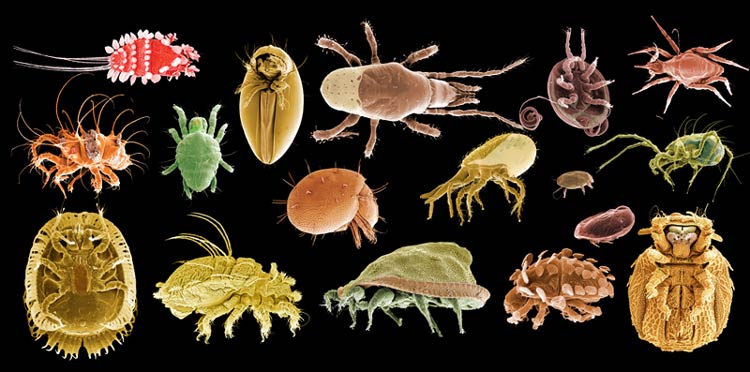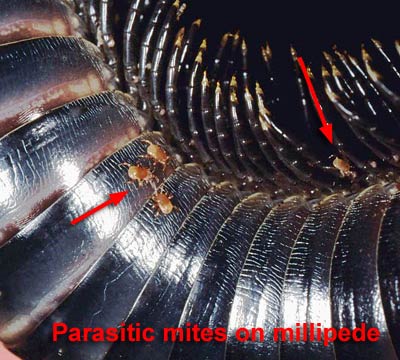Is it a mite?
VERSION 1 - PLEASE SEND COMMENTS & CORRECTIONS FOR FUTURE UPDATES TO:
DAVE WALTER: [email protected]

Although experienced APHIS inspectors are unlikely to ask this question often, identification of the Subclass Acari or Acarina (Class Arachnida) is not always easy. Mites are so small, morphologically diverse, and often bizarrely modified, that even specialists occasionally made an incorrect first diagnosis. There is even a case in the literature of a mite having been misdescribed as a new species of spider. This key is provided in the hopes that if a suspicious looking tiny arthropod is encountered in an inspection, it can quickly be determined if it is a mite. A second, objective of this key is to begin introducing and explaining the terminology that will be used in other keys under development. Terms are explained in the character state notes and images and in a separate Glossary. Ideally, when new inspection officers are trained, this key and its successors will be their introduction to the world of mites.
-
This key separates mites (Subclass Acari) from other arachnids and small invertebrates.
Based on personal experience, confusion is most likely with those tiny hexapods and arachnids that overlap mites in size (mostly those with body lengths of less than a few millimeters), especially when obvious characters such as wings, antennae, and primary segmentation are obscure or absent. Even usually large arachnids like scorpions and whipscorpions, however, may have small stages that could be confused with mites and often harbor mites.

Although the primary purpose of this key is to separate mites from other arthropods, it will also identify most other arachnids to order and distinguish several groups of mandibulate 'microarthropods'. Although few of these groups have species of high quarantine importance, many are common and likely to be intercepted, especially if the shipment contains soil, vegetation or forest products. Some of these groups are rare and contain species of potential conservation concern, and some (e.g. scorpions, spiders, centipedes, millipedes, insects) have large species popular in the pet trade. It is important to note that many of these larger arthropods have their own mite fauna that may be of quarantine concern.
VERSION 1 - PLEASE SEND COMMENTS & CORRECTIONS FOR FUTURE UPDATES TO:
DAVE WALTER: [email protected]